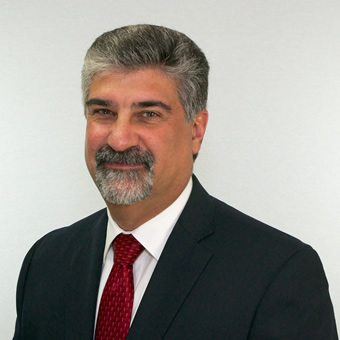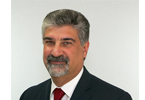 Dennis Samfilippo is the general manager of Philips Lighting’s Business Group Automotive NA and has been with Philips since 2010. Over the years, Samfilippo has held several key management positions with several leading companies. He has a wealth of aftermarket management experience and expertise. Prior to Philips, Samfilippo was the Global Business Unit Manager, OE Service, Independent Aftermarket & Specialty Markets at Delphi’s Saginaw Steering Gear Division. Before that, he was CEO at Inalfa Sunroofs, an aftermarket manufacturer and distributor of inbuilt sunroofs and accessories located in Wixom, Mich., which he sold to synergy investors after a successful turnaround. Earlier in his career, Dennis was the Global Product Line Manager, OE Service, Independent Aftermarket & Specialty Markets at Delphi’s Saginaw Steering Gear Division, a position he held before taking on the CEO responsibilities at Inalfa Sunroofs.
Dennis Samfilippo is the general manager of Philips Lighting’s Business Group Automotive NA and has been with Philips since 2010. Over the years, Samfilippo has held several key management positions with several leading companies. He has a wealth of aftermarket management experience and expertise. Prior to Philips, Samfilippo was the Global Business Unit Manager, OE Service, Independent Aftermarket & Specialty Markets at Delphi’s Saginaw Steering Gear Division. Before that, he was CEO at Inalfa Sunroofs, an aftermarket manufacturer and distributor of inbuilt sunroofs and accessories located in Wixom, Mich., which he sold to synergy investors after a successful turnaround. Earlier in his career, Dennis was the Global Product Line Manager, OE Service, Independent Aftermarket & Specialty Markets at Delphi’s Saginaw Steering Gear Division, a position he held before taking on the CEO responsibilities at Inalfa Sunroofs.
Automotive lighting is a category that has seen some impressive technological advancement over the past several years. Please fill us in on the latest advancements in automotive lighting technology and the product’s role in improving driver safety.
LED and Xenon technology are the most recent and important breakthroughs in automotive lighting. Both of these are game changers and provide motorists with the best of both worlds, namely safety and styling. The advantages of LED are well known and need little review. They offer style, image, and a better color of light for visibility. They also feature lower power consumption, extended lifetime, and durability. With all these high points, you would expect LED to be more prevalent as an automotive light source, but roadblocks such as thermal management, optical design, and electronic architecture have slowed forward lighting applications a bit.
At Philips, we have been able to address these issues and are making excellent progress, especially with regards to performance and thermal management. Our Philips LUXEON® Technology based products are world class in their design and their innovative packaging is enabling new optical concepts. This is allowing carmakers to break new ground with more design-oriented headlamps that are smaller than any previous models but do not compromise on lighting performance and safety.
Xenon headlamps have generally been featured on high-end vehicles, but that’s changing. We are seeing HID technology becoming more accessible for midsize and smaller vehicles. Our 25W Xenon headlight (D5S), for example, is being adopted by a number of leading car makers, and we will see the first of those platforms hitting the road in 2013.
In recent months, Philips has introduced several new LED products, including some specifically for the shop/workshop environment. Tell us about these.
As an LED manufacturer, we understand the value proposition that the LED Worklamp would have for both the service technician and the do-it yourselfer. By developing work lights that utilize LED technology, our customers can take advantage of the LED quality of light, brightness and overall LED durability verses incandescent lamps. The two most common complaints about incandescent worklamps are the intense heat they generate and how easy they break when they get banged around. Our Philips LED worklamps solve those problems in one shot. That’s the beauty of our worklamps.
In our worklamp line, we address all of the shop’s work light requirements and also strive to hit the price points that are attractive to the technician as well. We offer a variety of products including a very powerful penlight, a traditional corded work light, as well as a high-end rechargeable inspection lamp that also doubles as an AC leak detector.
We also recently introduced Philips LED Automotive Interior lighting, which is designed to replace the miniature incandescent bulbs typically used in vehicle interiors. These new LEDs create a brighter, whiter and more stylish interior light that does a better job in completely illuminating the vehicle’s interior.
Another new LED product that we introduced within the last 12 months is our Philips LED DayLight Daytime Running Light. These lights have proven to be very successful with both the professional installer and the do-it-yourselfer. The DRLs are continuing to ride the wave of vehicle personalization and offer the customer upscale styling and safety.
With so many automotive lighting variations on the market – from a sales perspective – what has Philips done to help simplify the purchase process for consumers?
Philips took a hard look at the various automotive replacement lighting products on the market and performed an extensive category management analysis, which resulted in a refinement of our “go to market” strategy.
As a result of the study, we’ve harmonized and simplified our selling proposition to focus on two simple platforms, safety and style. To address safety, we’ve recently launched, are our new innovative upgrade lighting solutions, “Vision” which offers 30% more light, “VisionPlus” which offers 60% more light and our brightest halogen lamp “X-treme Vision” which delivers up to 100% more light than a standard halogen lamp. The consumer can now simply choose the level of light on the road that fits their personalized driving conditions. And for style, we offer our CrystalVision Ultra, which is designed to create the whiter and brighter look of Xenon.
For the DIFM market, what can be done to better educate technicians and help them bring in more lighting business during a routine shop visit?
There is a tremendous opportunity for technicians to upsell customers from a standard to an upgrade lamp. Many technicians miss the chance to increase revenue when they only offer a standard replacement lighting solution to customers. We continually educate and encourage technicians to offer Philips upgrades not only to increase revenue, but also help their customers put more light on the road and increase driving safety.
When customers come into a shop with a burned out headlight, consideration should be given to replacing both headlights as well offering Philips upgrade bulbs to improve the customer’s visibility.
Technicians can also increase revenue by offering a complete vehicle lighting upgrade package including Philips LED Interior bulbs, Philips headlight upgrades and Philips LED DayLight DRLs.
On the service end, we’ve also just launched two key items, a lighting cabinet program that helps the shop to stock and sell the right lighting inventory and the Philips Headlight Lens Restoration kit that can return some easy service dollars whenever a cloudy headlight pulls into the bay.
What’s ahead for the automotive lighting category in terms of technological advancements, and its role in the car of the future?
Two things come to mind.
As I noted earlier, LEDs will see more penetration in high beam applications and OLED technology will be adapted for automotive use. OLEDs or organic light-emitting diodes, are currently being used to create digital displays in TVs, monitors, and portable systems such as mobile phones, and handheld games. Car makers, worldwide, are already experimenting with this technology, and in the future, beyond 2015, we will see OLEDs on the road – first applications will likely be on the inside of the vehicle.














